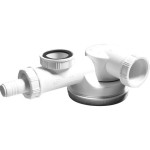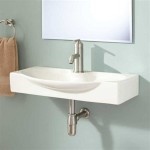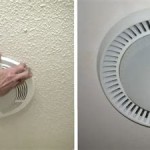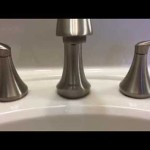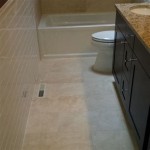How To Clean A Textured Bathroom Floor: A Comprehensive Guide With Photos
Textured bathroom floors offer a unique aesthetic and, in many cases, enhanced slip resistance. However, their textured surfaces can trap dirt, grime, soap scum, and mildew more readily than smooth surfaces. Regular and thorough cleaning is crucial to maintaining the appearance and hygiene of these floors. This article provides a detailed guide on how to effectively clean a textured bathroom floor, ensuring it remains clean, safe, and visually appealing.
Effective cleaning requires understanding the type of material the floor is made of. Common textured bathroom floor materials include ceramic tile, porcelain tile, natural stone (such as slate or travertine), vinyl, and even concrete. Each material has specific cleaning requirements and sensitivities to different cleaning agents. Using the wrong product can cause discoloration, damage, or etching of the surface. Therefore, identifying the flooring material is the first step in choosing the appropriate cleaning method. This article will provide general guidelines applicable to most materials, as well as specific considerations for certain types of flooring.
Preparation is key to successful cleaning. Before beginning the cleaning process, remove any loose debris, such as hair, dust, and dirt, with a dry method. This prevents the debris from being ground into the texture during wet cleaning, which can make the cleaning process less efficient. A vacuum cleaner with a brush attachment is ideal for removing dry debris from the textured surface. A broom can also be used, but it may not be as effective at reaching into the crevices. Removing all items from the floor, such as bath mats, rugs, and trash cans, is also essential for ensuring that the entire floor surface is accessible during cleaning. This initial preparation significantly impacts the overall effectiveness of the cleaning process.

Removing loose debris and items from the floor before cleaning.
Choosing the Right Cleaning Solution
Selecting the appropriate cleaning solution is crucial for achieving optimal results without damaging the floor. A pH-neutral cleaning solution is generally safe for most types of textured bathroom floors. These solutions are designed to effectively remove dirt and grime without causing damage or discoloration. Commercially available pH-neutral floor cleaners can be found at most home improvement stores or supermarkets. Always read the product label carefully and follow the manufacturer's instructions for dilution and application.
For more stubborn stains, such as soap scum or mildew, a slightly acidic cleaner may be necessary. However, acidic cleaners should be used with caution, especially on natural stone floors, as they can etch or damage the surface. A mixture of water and white vinegar (in a 1:1 ratio) can be used as a mild acidic cleaner. Test the solution in an inconspicuous area first to ensure that it does not cause any adverse reactions. If the vinegar solution does not effectively remove the stains, a commercially available bathroom cleaner specifically formulated for soap scum and mildew removal may be necessary.
For heavily soiled floors or areas prone to mildew growth, a cleaning solution containing bleach may be considered. However, bleach should be used with extreme caution, as it can discolor grout and some types of flooring. Always dilute bleach according to the manufacturer's instructions, and wear gloves and eye protection when handling it. Ensure adequate ventilation in the bathroom when using bleach. After applying the bleach solution, rinse the floor thoroughly with clean water to remove any residue. It is important to remember that bleach should never be mixed with ammonia, as this can create toxic fumes.
For those preferring natural cleaning solutions, baking soda can be used as a mild abrasive cleaner. Mix baking soda with water to form a paste, and apply it to stained areas. Let the paste sit for a few minutes, then scrub gently with a brush. Rinse thoroughly with clean water to remove any residue. Lemon juice can also be used as a natural cleaning agent due to its acidic properties. Dilute lemon juice with water and apply it to the floor. Let it sit for a few minutes, then scrub and rinse. Remember to test any cleaning solution in an inconspicuous area first to ensure compatibility with the flooring material.

Selection of suitable cleaning solutions for various cleaning needs.
Effective Scrubbing Techniques
The scrubbing process is crucial for removing dirt and grime from the textured surface of the floor. A stiff-bristled brush is the most effective tool for cleaning textured floors, as it can reach into the crevices and dislodge embedded dirt. Avoid using abrasive scrub pads or steel wool, as these can scratch or damage the flooring material. A grout brush is particularly useful for cleaning grout lines, which are often a breeding ground for mold and mildew.
Apply the chosen cleaning solution to the floor, ensuring that it covers the entire surface evenly. Allow the solution to sit for a few minutes to loosen the dirt and grime. Then, using the stiff-bristled brush, scrub the floor in a circular motion, paying particular attention to areas with heavy staining or mildew growth. Apply moderate pressure to ensure that the brush bristles reach into the texture and dislodge the dirt. For grout lines, use the grout brush to scrub along the lines, removing any mold or mildew.
For larger bathrooms, it may be helpful to clean the floor in sections, applying the cleaning solution and scrubbing each section before moving on to the next. This prevents the cleaning solution from drying out before it has a chance to work. After scrubbing each section, rinse it thoroughly with clean water to remove any residue. Use a mop or sponge to absorb the excess water, ensuring that the floor is as dry as possible.
In some cases, a steam cleaner can be used to clean textured bathroom floors. Steam cleaners use high-temperature steam to loosen dirt and grime, making it easier to remove with a brush or mop. However, steam cleaners should be used with caution on certain types of flooring, such as vinyl or natural stone, as the high heat can damage the surface. Always consult the manufacturer's instructions for your flooring material before using a steam cleaner. When using a steam cleaner, follow the manufacturer's instructions for filling the water tank and operating the machine. Move the steam cleaner slowly over the floor, allowing the steam to penetrate the texture and loosen the dirt. After steaming, use a clean mop or cloth to wipe up any excess moisture.

Demonstrates the correct technique for scrubbing a textured floor.
Rinsing and Drying the Floor
Thorough rinsing is an essential step in cleaning a textured bathroom floor. Residual cleaning solution can attract dirt and grime, negating the effects of the cleaning process. Additionally, some cleaning solutions can leave a film on the floor surface, making it appear dull or sticky. Therefore, rinsing the floor thoroughly with clean water is crucial for removing any traces of the cleaning solution and ensuring a clean, streak-free finish.
The rinsing process involves using clean water to wash away the cleaning solution and any dislodged dirt. A mop and bucket are commonly used for rinsing larger areas. Alternatively, a hose with a spray nozzle can be used, provided that the bathroom has a drain system that can handle the water volume. When rinsing, ensure that all areas of the floor are thoroughly saturated with clean water. Multiple rinses may be necessary to remove all traces of the cleaning solution.
After rinsing, drying the floor is equally important. Leaving the floor wet can create a breeding ground for mold and mildew, particularly in areas with poor ventilation. Additionally, standing water can seep into grout lines and damage the underlying flooring material. Drying the floor promptly helps to prevent these issues and maintains the long-term integrity of the flooring.
The most common method for drying a bathroom floor is to use a clean, absorbent mop or towel. Wipe the floor in a systematic manner, ensuring that all areas are thoroughly dried. For textured floors, it may be necessary to use a microfiber cloth to reach into the crevices and absorb any remaining water. Another effective method for drying the floor is to use a fan. Positioning a fan in the bathroom can help to circulate air and speed up the drying process. Open the bathroom window or turn on the ventilation fan to further enhance air circulation and reduce humidity. In some cases, a wet vacuum can be used to extract excess water from the floor, particularly after rinsing with a hose. This method is particularly effective for large bathrooms or areas with poor drainage.

Sequential steps of rinsing and drying the bathroom floor.
By following these steps, a textured bathroom floor can be effectively cleaned, maintaining its appearance and hygiene. Regular cleaning, combined with the appropriate cleaning solutions and techniques, will help to prevent the buildup of dirt, grime, and mildew, ensuring a safe and visually appealing bathroom environment.

How To Clean Textured Tile Flooring The Easy Way With Steam

How To Design A Bathroom That S Easy Clean

How To Design A Bathroom That S Easy Clean

How To Design A Bathroom That S Easy Clean

Tile Texture Feature Tiles Just In Place Interior Design

Rectangular Bathroom Layout With Washer And Dryer
5 Things You Should Know About Cleaning Porcelain Tiles

Our Bathroom Before Afters Plus A Budget Breakdown Young House Love

Choosing Kitchen Floor Tiles That Stay Clean

Bathroom Floor Tiles Design Ideas For Every Style And Budget In 2024
Related Posts
